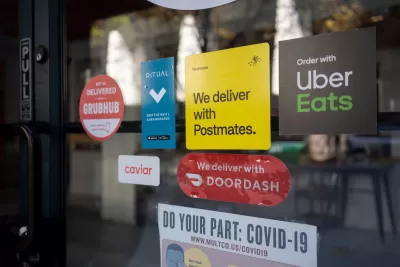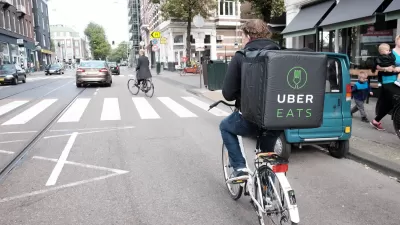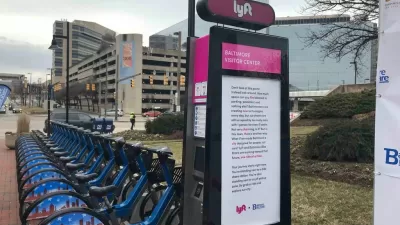The ride-hailing giant posted an operating profit for the first time in its history, thanks largely in part to its successful food delivery business.

Long known as a poster child for venture capitalism gone wild, with years upon years of losses buoyed only by massive investments, Uber has finally posted an operating profit, according to a Bloomberg article published in Crain’s New York. “Uber posted a second-quarter operating profit according to generally accepted accounting principles of $326 million and free-cash-flow of $1.14 billion.”
“After struggling with a driver shortage that caused fares and wait times to increase, Uber said the number of active drivers were up 33% in the second quarter compared with last year. The number of trips taken increased 26% from a year earlier to a record high.” Meanwhile, the company’s food delivery sector has shown strong growth.
Uber’s main competitor, Lyft—which now operates some of the country’s biggest bike share programs—isn’t doing as well: “Uber accounted for 74% of the US consumer ride-share sales at the end of June, while Lyft had 26%, according to Bloomberg Second Measure.”
FULL STORY: Uber posts first operating profit as ridership hits new record

Alabama: Trump Terminates Settlements for Black Communities Harmed By Raw Sewage
Trump deemed the landmark civil rights agreement “illegal DEI and environmental justice policy.”

Study: Maui’s Plan to Convert Vacation Rentals to Long-Term Housing Could Cause Nearly $1 Billion Economic Loss
The plan would reduce visitor accommodation by 25% resulting in 1,900 jobs lost.

Why Should We Subsidize Public Transportation?
Many public transit agencies face financial stress due to rising costs, declining fare revenue, and declining subsidies. Transit advocates must provide a strong business case for increasing public transit funding.

Paris Bike Boom Leads to Steep Drop in Air Pollution
The French city’s air quality has improved dramatically in the past 20 years, coinciding with a growth in cycling.

Why Housing Costs More to Build in California Than in Texas
Hard costs like labor and materials combined with ‘soft’ costs such as permitting make building in the San Francisco Bay Area almost three times as costly as in Texas cities.

San Diego County Sees a Rise in Urban Coyotes
San Diego County experiences a rise in urban coyotes, as sightings become prevalent throughout its urban neighbourhoods and surrounding areas.
Urban Design for Planners 1: Software Tools
This six-course series explores essential urban design concepts using open source software and equips planners with the tools they need to participate fully in the urban design process.
Planning for Universal Design
Learn the tools for implementing Universal Design in planning regulations.
Smith Gee Studio
Alamo Area Metropolitan Planning Organization
City of Santa Clarita
Institute for Housing and Urban Development Studies (IHS)
City of Grandview
Harvard GSD Executive Education
Toledo-Lucas County Plan Commissions
Salt Lake City
NYU Wagner Graduate School of Public Service





























